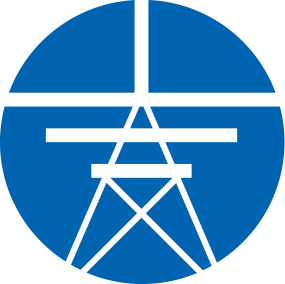Stability and control of electrical power systems
General information
In recent years, the behaviour of electrical energy systems has changed significantly. This development is primarily characterised by the increased use of power electronics-coupled technologies such as wind turbines, photovoltaic systems, battery storage, FACTS and HVDC connections. Due to these changes in system dynamics, the IEEE has revised its long-established classification of grid stability.
The previous classification into rotor angle stability, voltage stability and frequency stability has been retained, and two new main categories have been added: ‘converter stability’ and ‘resonance stability’. This expansion enables a more holistic representation of the stability problems of modern power grids, which are increasingly determined by complex controller dynamics.
Figure 1: Classification of stability criteria according to [1]
Time Scales of Dynamic Phenomena
The description and analysis of stability phenomena is based on characteristic time scales. Electromechanical processes such as frequency or angular deviations occur in the range of seconds and can often be described with sufficient accuracy using phasor-based models. In contrast, there are transient and electromagnetic phenomena that occur in the millisecond range and below. These rapid effects are becoming increasingly important in the context of power electronic feeders.
Voltage stability and frequency stability in the context of modern grids
A basic distinction is made between short-term and long-term voltage stability. Short-term instabilities often arise due to fast-responding loads such as induction motors or HVDC converters, especially at weak grid connection points. Long-term instabilities, on the other hand, manifest themselves in the form of slow voltage instabilities resulting from slow control processes such as transformer tap changers or insufficient reactive power provision from generators.
The elimination of synchronous machines not only reduces inertia in the system, but also fundamentally changes the mechanisms of frequency and voltage maintenance. While conventional generators provide a natural inertia response via their rotating mass, converter-coupled systems do not have this property. Nevertheless, it is possible to provide frequency support through targeted control strategies, for example in the form of virtual flywheel mass.
Resonance phenomena, controller interactions and electrical instabilities
The introduction of the resonance stability class takes into account the fact that modern grids are susceptible not only to mechanical resonance but also to purely electrical resonance. Electrical resonances – such as subsynchronous control interaction (SSCI) – occur primarily in connection with DFIG-based wind turbines and series capacitors. This can lead to pronounced subsynchronous current and voltage oscillations. These phenomena place high demands on the depth of modelling and often require additional damping measures at the control level.
This stability category of converter stability describes unstable system states resulting from dynamic interactions between power electronic controllers and the grid. Typical symptoms are frequency and voltage oscillations or synchronisation errors. Stabilisation measures range from adapted controller design and active damping strategies to strengthening the grid connection.
Future challenges and research priorities
The increasing technological penetration of networks with converter technology and the associated changes in dynamics pose major challenges for analysis and operating concepts. Future research will focus on the development of hybrid system models, although there is still a need for research in the areas of the ‘classical’ three stability criteria: voltage, frequency and rotor angle stability.
References:
[1], Hatziargyriou, N., Milanovic, J., Rahmann, C., Ajjarapu, V., Canizares, C., Erlich, I., ... & Vournas, C. (2020). Definition and classification of power system stability–revisited & extended. IEEE Transactions on Power Systems, 36(4), 3271-3281.


